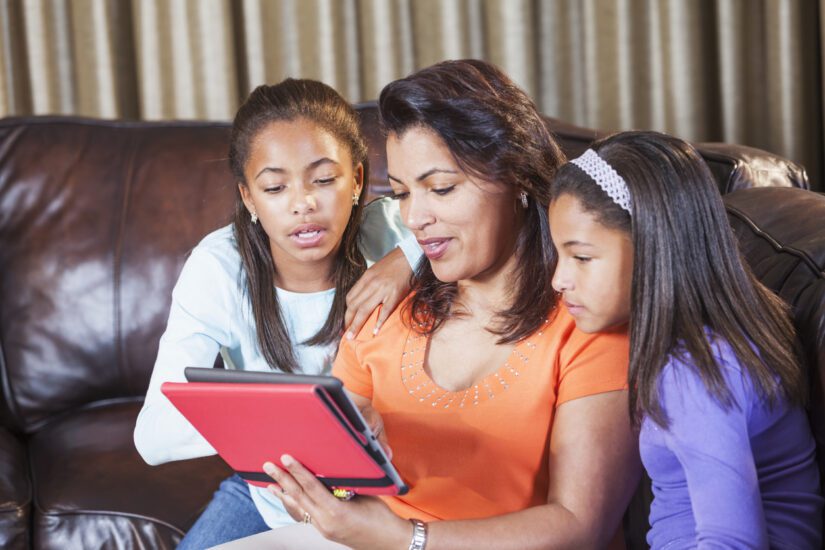As we’ve touched on in previous blogs, social media can be a great way to stay connected with others, keep up to date with current events, and even aid the learning process! As technology continues to advance, we find social media playing a larger role in our lives than ever before. However, it is important to remember to talk to your children about the responsibilities that come with using these technologies. Here are a few ways to protect your kids on social media!
Check privacy settings. This is one of the most important things you can do to ensure strangers are not interacting with your kids. Every major social media network, from Facebook to Instagram, has an entire settings page devoted to account privacy. We recommend that children refrain from keeping their profiles on public settings. Otherwise, anyone will be able to view their content. By keeping your profile private, only people you approve as “friends” or “followers” will be able to see what you post!
Follow or friend them yourself! In today’s day and age, most adults have social media accounts as well! Although your child may be hesitant (or embarrassed), try “following” or “friending” them on the social network of your choice. This will help you to see first-hand what your child is posting online and better gauge the type of people they are interacting with.
Check the age requirements. Every social media network has an age requirement to even sign up. Popular networks like Twitter, for example, have a minimum age of 13. The now-defunct video sharing app, Vine, was widely used among kids – despite having an age requirement of 17. Other social media networks have certain settings that change based on the age of the user. YouTube only requires you to be 13 years old to sign up. However, age-restricted videos and mature content is available to users over the age of 18. The point is – don’t lie about your age on social media, and make sure your children are not using networks for which they don’t meet the age requirements.
Don’t share your location. Social media networks generally give the option to share your location when posting something. For example, the popular video app Snapchat has a new feature called Snap Maps that displays your location when posting content. The point of this is to allow adults to easily share events and places with each other – if your friend decides to Snapchat some delicious food, you’ll be able to know the restaurant they are eating at! However, this is obviously not a good feature for children and minors. Luckily, Snapchat has “Ghost Mode” – enabling this in your settings will disable location sharing! It’s important to research the networks your child uses to see if special settings should be enabled for their protection.
Talk to your kids about online safety. In reality, this is the most effective way of protecting your children online. Teach your kids to use “common sense” when approaching people online – if a stranger contacts them, they shouldn’t respond. Immediately report any cases of harassment, bullying, or inappropriate messages to the network. Don’t tell people your address, and never share personal information about yourself. Only talk to people you know in real life, and privatize your profile so only your friends (not the whole world) can see what you post. Social media is a wonderful tool, but it is important to remind your kids that this technology comes with great responsibility.


